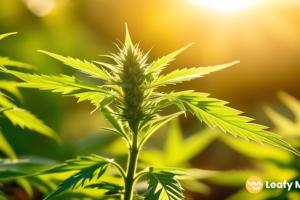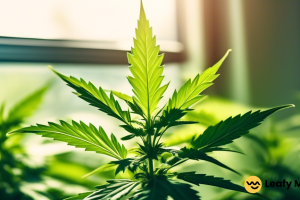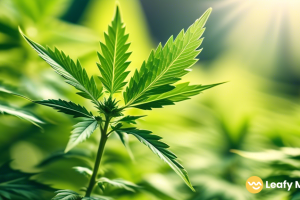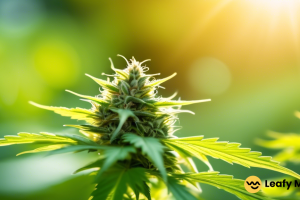In the rapidly evolving world of cannabis science, a profound shift is occurring. No longer is the conversation focused solely on THC and CBD, the most renowned cannabinoids. This journey into the verdant realm of cannabis elucidates a broad spectrum of cannabinoids, each with unique characteristics and potential therapeutic benefits. This article aims to demystify the science of cannabis, providing a deeper understanding of these often-overlooked compounds and the extraordinary complexity of this fascinating plant.
The Multi-Faceted World of Cannabinoids
Cannabinoids, the bioactive compounds found in the cannabis plant, exist in many forms. Over a hundred different cannabinoids have been identified to date, each with its unique molecular structure and biological effects. These compounds’ complexity stems from how they interact with the body’s endocannabinoid system, which plays a significant role in maintaining physiological homeostasis.
Cannabinoids can act as agonists or antagonists to the receptors within this system, resulting in a range of effects that may be therapeutic for various medical conditions. This complexity suggests a vast potential for cannabinoid-based therapies, underlining the need for further research into medical cannabis.
The Role of Cannabinoids in the Plant
In the cannabis plant, cannabinoids function as secondary metabolites, substances that are not directly involved in the plant’s growth, development, or reproduction but serve various ecological functions. They are primarily produced in the glandular trichomes, which appear as tiny hair-like outgrowths on the surface of medical marijuana.
One of their critical roles is defense: cannabinoids have insecticidal, antifungal, and antibacterial properties that protect the plant from predators and pathogens. They also aid in stress resilience, helping the plant adapt to environmental stressors like UV radiation, heat, and drought.
Extraction and Isolation Techniques
The extraction and isolation of cannabinoids are critical to studying their unique properties and potential benefits. Multiple methods can be employed, each with its advantages and disadvantages. Solvent extraction, using substances like ethanol, butane, or CO2, is one of the most common methods due to its efficiency and scalability. The process involves separating the cannabinoids from the plant material, then evaporating the solvent to yield a cannabinoid-rich extract.
Alternatively, supercritical fluid extraction, often with CO2, provides a cleaner and more selective method, reducing the need for further purification. Once extracted, chromatographic techniques like High-Performance Liquid Chromatography (HPLC) or Gas Chromatography (GC) can isolate specific cannabinoids for further analysis.
Cannabinoids: Beyond THC and CBD Science
While THC and CBD are the most well-known cannabinoids, many others are emerging with significant research interest. Cannabigerol (CBG), the precursor from which other cannabinoids are synthesized in the plant, is gaining recognition for its potential anti-inflammatory and neuroprotective effects. Cannabinol (CBN), produced when THC degrades, shows promise as a potent sedative and potential aid for sleep disorders.
Other cannabinoids, like cannabichromene (CBC), delta-8 THC, and tetrahydrocannabivarin (THCV), exhibit unique physiological effects that could be leveraged for therapeutic purposes. Exploring these less-known cannabinoids expands our understanding of cannabis’s full potential and illuminates new pathways for cannabinoid-based therapeutics.
The Subtle Strength of CBG
Cannabigerol (CBG) is often called the “mother of all cannabinoids” because it’s the precursor from which other cannabinoids are synthesized in the plant. It’s typically present in low concentrations in most cannabis strains but has unique therapeutic potential. Studies suggest that CBG may exhibit anti-inflammatory, neuroprotective, and antibacterial properties.
Recent clinical trials have also shown promising results in using CBG for reducing intraocular pressure, suggesting it may have potential in managing conditions like glaucoma. Furthermore, CBG may play a role in the entourage effect, subtly enhancing the impact of other cannabinoids when present in a full-spectrum cannabis product.
Exploring CBN: The Aging Cannabinoid
Cannabinol (CBN) is a cannabinoid produced when THC degrades over time due to exposure to oxygen and heat, hence the reference to it as an “aging” cannabinoid. While CBN does not produce a high like THC, it garners interest for its potential therapeutic effects.
Early research suggests that CBN may act as a potent sedative. Combined with other cannabinoids, it might enhance their overall effects, a phenomenon called the entourage effect. Further studies investigate its potential as an appetite stimulant, anti-inflammatory agent, and even a deterrent to MRSA, a resistant bacterial strain.
CBC: The Third Most Common Cannabinoid
Cannabichromene (CBC) stands as the third most prevalent cannabinoid in cannabis, though it’s less recognized compared to its counterparts, THC and CBD. Like CBD, CBC is non-intoxicating, meaning it does not produce a “high.” However, it possesses a unique set of potential therapeutic benefits without the risk of leading to drug and alcohol dependence.
CBC may have powerful anti-inflammatory properties and could contribute to the overall analgesic effects of cannabis. Additionally, early studies suggest it may promote neurogenesis, the growth of brain structure, and the development of nerve cells, pointing to potential applications in neurodegenerative disorders with little risk of drug-to-drug interactions.
Delta-8 THC: A Less Famous Sibling
Delta-8 THC, a variant of THC, is the less famous sibling of the infamous Delta-9 THC, the primary psychoactive compound in cannabis. It occurs in very low concentrations in the cannabis plant but can be produced via the isomerization of Delta-9 THC or CBD.
Delta-8 THC has a lower psychoactive potency than its Delta-9 counterpart, providing a more moderate “high” with less anxiety and paranoia, often associated with Delta-9. Recent studies suggest potential benefits such as nausea control, appetite stimulation, and anxiety relief. As research continues, Delta-8 THC could be a valuable therapeutic compound with fewer side effects and less likely to develop cannabis use disorder.
Unraveling the Potential of THCV
Tetrahydrocannabivarin (THCV) is a minor cannabinoid that starkly contrasts its well-known relative, THC. Unlike THC, known for its appetite-stimulating effects, THCV might work as an appetite suppressant, potentially making it a valuable compound for weight management.
Preliminary research also suggests that THCV might show promise in glycemic control, making it a potential candidate for diabetes treatment. Moreover, the National Institute and other organizations are exploring its neuroprotective properties for therapeutic applications in conditions like Parkinson’s disease. While THCV research is in its infancy, the early findings are exciting and indicate a vast untapped potential.
CBDV: The Underappreciated Cousin
Cannabidivarin (CBDV) is a non-psychoactive cannabinoid often found in higher concentrations in cannabis strains with lower THC content. Though lesser known than CBD, its molecular cousin, CBDV, has gained scientific interest due to its unique potential health benefits and low potential for leading to drug abuse.
Preclinical studies suggest that CBDV might be beneficial in managing epilepsy and other neurological conditions, as it appears to influence the function of the GABA neurotransmitter, a key player in seizure activity. CBDV’s potential as an anti-nausea agent is also being explored, paving the way for future investigations into this underappreciated cannabinoid. It could be a helpful alternative for children with seizures as it may not adversely influence adolescent brain development.
The Curious Case of Cannabielsoin (CBE)
Cannabielsoin (CBE) is a less-known cannabinoid derived from the metabolic breakdown of CBD. Though research into CBE is currently limited, this compound is gaining interest due to its unique origin and potential therapeutic properties. Early investigations suggest that CBE does not bind significantly to cannabinoid receptors CB1 or CB2, unlike many other cannabinoids.
This peculiarity piques scientific curiosity, as understanding the biological activity of CBE could lead to new insights into how cannabinoids interact with our bodies and contribute to the entourage effect. As research progresses, the curious case of CBE will hopefully unravel further.
Cannabicyclol (CBL): The Elusive Cannabinoid
Cannabicyclol (CBL) is a non-psychoactive cannabinoid found in the cannabis plant. CBL is produced through cannabichromene (CBC) degradation when the plant is exposed to light or heat over time. Given its origin, CBL is often considered an “aging” cannabinoid, like CBN.
Although CBL is typically present in low concentrations in most cannabis strains, it has recently attracted interest due to its potential anti-inflammatory and immunosuppressive effects. However, the scientific understanding of CBL is still quite limited, earning it the title of the “elusive cannabinoid.” Ongoing research aims to elucidate CBL’s properties and therapeutic potential, contributing to the ever-growing complexity of cannabis science for chronic pain, nausea and vomiting, and other disorders.
Synthetic Cannabinoids: A Brave New World
The discovery of the endocannabinoid system sparked interest in developing synthetic cannabinoids—man-made compounds designed to interact with the same system as plant-derived cannabinoids. These synthetic variants can help researchers understand cannabinoid interactions with human physiology and develop new therapies.
They also represent potential tools for studying diseases where the endocannabinoid system plays a role, such as multiple sclerosis, epilepsy, and certain psychiatric disorders. However, synthetic cannabinoids, such as those found in products like “Spice” or “K2,” have been associated with severe health risks due to their potent effects and lack of regulatory control. As a result, the development and use of synthetic cannabinoids present a brave new world with significant promise but also considerable caution. While they may be an alternative for chronic cannabis users, the regulations are not yet in place to do so safely.
Can Laced Cannabis Affect the Presence of Cannabinoids?
When using cannabis, it’s essential to watch out for laced cannabis, as it can affect the presence of cannabinoids in the product. Consuming laced cannabis may alter the intended effects and potentially pose health risks. It’s important to be aware and cautious when purchasing and using cannabis products.
Therapeutic Promises: Cannabinoids and Health
Cannabinoids offer a cornucopia of potential health benefits. With their ability to interact with the endocannabinoid system, cannabinoids have shown promise in managing various health conditions. From the well-documented cancer pain-relieving effects of THC to the anti-inflammatory properties of CBD, cannabinoids have potential therapeutic applications in areas such as epilepsy, neurodegenerative diseases, cancer, and psychiatric disorders.
Minor cannabinoids, such as CBG and CBC, also demonstrate potential benefits in preclinical trials, expanding the therapeutic potential of the cannabis sativa plant. As research into marijuana use progresses, the range of possible therapeutic applications of cannabinoids continues to broaden, promising a new wave of treatment options.
The Role of Cannabinoids in Recreational Use
Beyond their therapeutic applications, cannabinoids play a significant role in recreational cannabis use. The psychoactive effects of THC have long been the primary focus of recreational cannabis users. However, the subtler effects of other cannabinoids are increasingly recognized as contributing to the overall experience. For instance, CBD’s calming effects can balance THC’s psychoactivity, while the mild euphoria associated with Delta-8 THC provides a less intense alternative.
The potential appetite-stimulating effects of CBN or the mood-modulating effects of CBC further contribute to the nuanced and complex experience of recreational cannabis use. Understanding these diverse effects helps users make informed choices and promotes safer and more enjoyable experiences.
Regulatory Landscape: Cannabinoids and Legalities
Navigating the legal landscape surrounding cannabinoids can be challenging due to the differing laws at international, federal, and state levels. While the United Nations has recently reclassified cannabis and its derivatives, reducing restrictions on medical and scientific uses, many countries still enforce stringent regulations.
In the United States, the legal status of cannabis varies state by state, with some allowing medical use, others permitting recreational use, and still others maintaining complete prohibition. We recommend checking your local and state medical cannabis laws. The 2018 Farm Bill federally legalized hemp-derived CBD, provided it contains less than 0.3% THC, but the Food and Drug Administration still does not approve CBD as a dietary supplement. These complex and often contradictory laws underscore the need for continued advocacy and research to inform future policy and ensure safe and fair access to cannabinoids.
The Future of Cannabinoid Research
As we venture further into the scientific study of cannabis, the significance of each cannabinoid becomes more evident, illustrating this plant’s intricate and synergistic nature. Understanding these cannabinoids and their impacts on our bodies opens doors to revolutionary developments in medical and recreational cannabis.
The future holds immense promise as we continue to navigate the complexities of these compounds, expanding our collective knowledge and redefining the landscape of cannabinoid research. A world of new therapeutic and recreational opportunities awaits us as we explore the incredible diversity of cannabinoids.











Leave a Reply